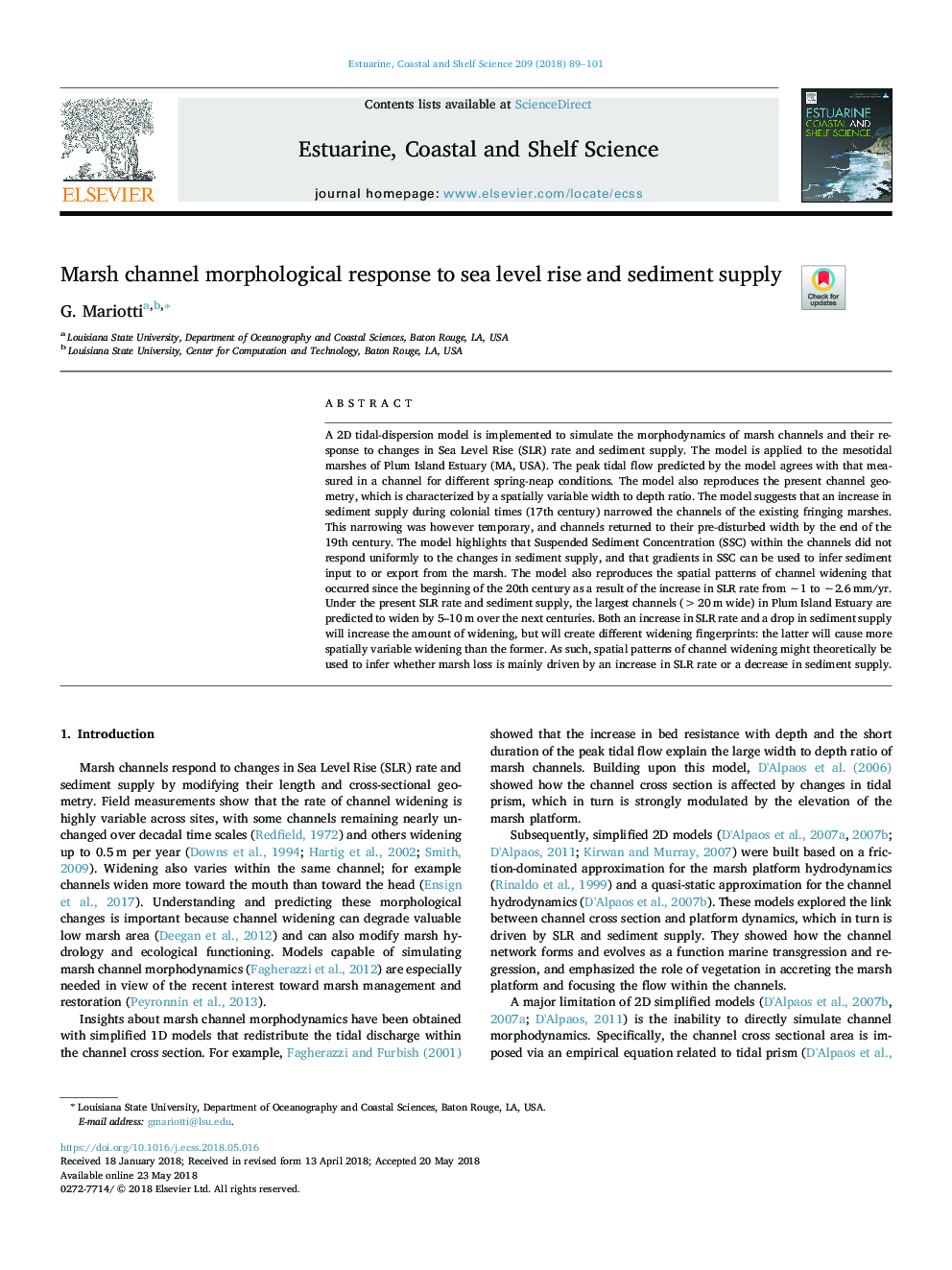| Article ID | Journal | Published Year | Pages | File Type |
|---|---|---|---|---|
| 8884711 | Estuarine, Coastal and Shelf Science | 2018 | 13 Pages |
Abstract
A 2D tidal-dispersion model is implemented to simulate the morphodynamics of marsh channels and their response to changes in Sea Level Rise (SLR) rate and sediment supply. The model is applied to the mesotidal marshes of Plum Island Estuary (MA, USA). The peak tidal flow predicted by the model agrees with that measured in a channel for different spring-neap conditions. The model also reproduces the present channel geometry, which is characterized by a spatially variable width to depth ratio. The model suggests that an increase in sediment supply during colonial times (17th century) narrowed the channels of the existing fringing marshes. This narrowing was however temporary, and channels returned to their pre-disturbed width by the end of the 19th century. The model highlights that Suspended Sediment Concentration (SSC) within the channels did not respond uniformly to the changes in sediment supply, and that gradients in SSC can be used to infer sediment input to or export from the marsh. The model also reproduces the spatial patterns of channel widening that occurred since the beginning of the 20th century as a result of the increase in SLR rate from â¼1 to â¼2.6â¯mm/yr. Under the present SLR rate and sediment supply, the largest channels (>20â¯m wide) in Plum Island Estuary are predicted to widen by 5-10â¯m over the next centuries. Both an increase in SLR rate and a drop in sediment supply will increase the amount of widening, but will create different widening fingerprints: the latter will cause more spatially variable widening than the former. As such, spatial patterns of channel widening might theoretically be used to infer whether marsh loss is mainly driven by an increase in SLR rate or a decrease in sediment supply.
Related Topics
Physical Sciences and Engineering
Earth and Planetary Sciences
Geology
Authors
G. Mariotti,
